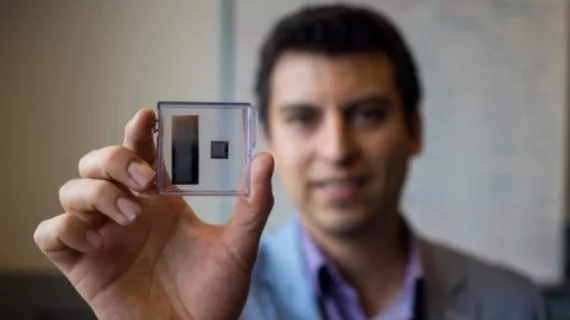Canadian engineers developing $100 smartphone-controlled ultrasound
Engineers at the University of British Columbia (UBC) in Canada have developed a new ultrasound transducer that they claim may lower the cost of ultrasound scanners to $100, according to research published in Microsystems & Nanoengineering.
The authors, led by Carlos Gerardo, a PhD candidate in electrical and computer engineering at UBC, said ultrasound imaging is the most widely used medical imaging modality. Forecasted growth in the billions has boosted research in the ultrasound market, specifically involving transducer design.
The researchers replaced the traditional piezoelectric crystals in the transducers with small vibrating drums made of a polymer resin called polymer capacitive micro-machined ultrasound transducers, or polyCMUTs. The polyCMUTs are more cost-effective during the manufacturing process.
“Transducer drums have typically been made out of rigid silicon materials that require costly, environment-controlled manufacturing processes, and this has hampered their use in ultrasound,” said lead author Carlos Gerardo, a PhD candidate in electrical and computer engineering at UBC in a prepared statement. “By using polymer resin, we were able to produce polyCMUTs in fewer fabrication steps, using a minimum amount of equipment, resulting in significant cost savings.”
The sonograms produced by the transducer were as sharp as or even more detailed than traditional sonograms produced by traditional transducers, the authors noted. The UBC-developed transducer only needs 10 volts to operate, allowing for operation with smartphones.
The UBC-developed transducer has the potential to be built into a flexible material, much like a bandage that can be wrapped around the body for scanning and detailed views.
“You could miniaturize these transducers and use them to look inside your arteries and veins. You could stick them on your chest and do live continuous monitoring of your heart in your daily life,” said co-author Robert Rohling, PhD, professor at UBC. “It opens up so many different possibilities.”

